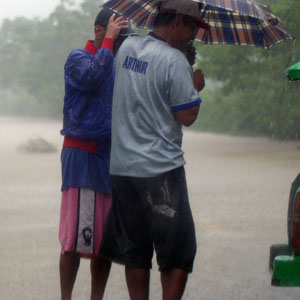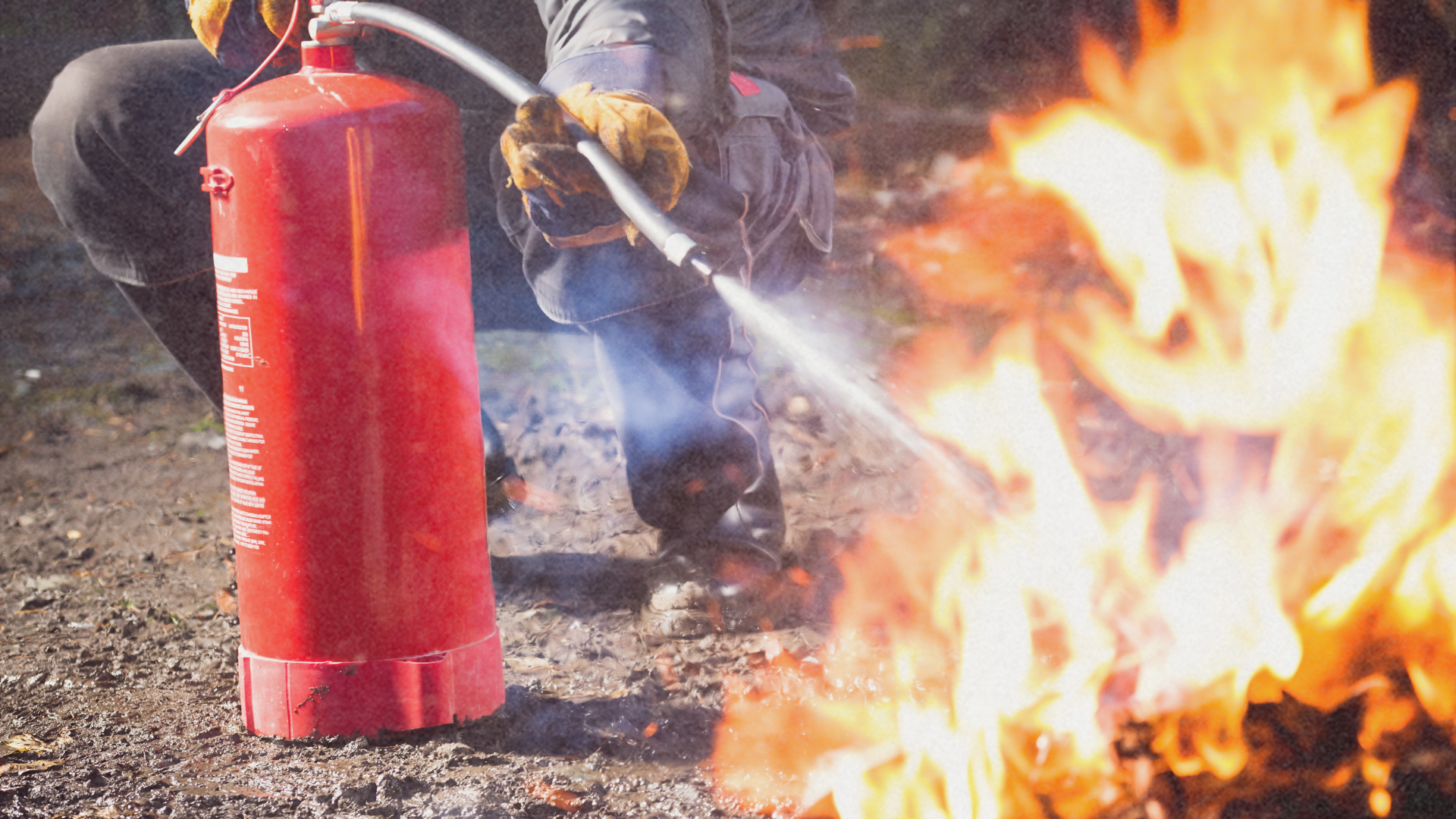“Tragedy is a tool for the living to gain wisdom, not a guide by which to live.” – Robert Francis Kennedy quotes (U.S. attorney general and adviser, 1925-1968)
“La Union is a Garden Coast paradise,” Arthur Cortez, Jr., tourism operations division chief of the Provincial Information and Tourism Office in La Union, begins.
In October 2009, this paradise was beset with the catastrophic Typhoon Pepeng, which had left numerous deaths and large property damages in its wake. It was said to be the worst typhoon to have hit the entire La Union province.
“Last disaster that hit La Union before Pepeng was Emong, but it hit the second district (of the province) alone,” says Colonel Noli Taliño, vice-chairman of the Provincial Disaster Coordinating Council (PDCC) in La Union, who is also the La Union Police Provincial Director. Strangely, the top causes of casualty in this beach town, according to the Colonel, were drowning, landslide, and strong water current. Col. Taliño remarks, “It could have made a difference if people only knew how to swim.”
If the townspeople themselves were ill-prepared for the disaster, what about the authorities who bear the task of rescuing the residents?
When The Going Got Tough
“We activated PDCC operations as soon as (former) Defense Secretary Gilbert “Gibo” Teodoro arrived in La Union on October 1 to warn Regions 1 and 2,” Col. Taliño says. On October 2, preparedness measures, weather updates, and forecasts were discussed; the inventory of resources checked, and evacuation centers and informants from each municipality were identified. Col. Taliño, thereafter, ordered the Chief of Police to forewarn and convene the Municipal Disaster Coordinating Council (MDCC). Because of this, preemptive evacuations in municipalities like Aringay and Bauang were enforced at once. “The protocol is for MDCC to respond first, PDCC only to augment,” he clarifies.
Extensive PDCC rescue operations started in the afternoon of October 8 when they received the very first call to assist a family from the Municipality of Tubao. When rescue calls escalated, the PDCC requested the help of the Philippine Coast Guards and the Philippine National Police, while Eugene Cabrera from the Office of Civil Defense instructed the Philippine Navy to conduct rescue operations as well.
Almira Abrazado, chapter administrator of the Philippine National Red Cross (PNRC) in La Union, recalls, “Being a member of PDCC, PNRC also started its relief operations in the first landfall of Typhoon Pepeng on October 2, after preemptive evacuations were enforced.” She relates that PNRC received its first call for rescue on October 9 from the Municipality of Bangar where a cracked dike along the Amburayan River was feared to endanger the safety of residents. She says two of her teams were sent out to assist and evacuate residents in Bangar, thus providing the second round of relief operations.
“There was even no shortage of volunteers. Local officials, private individuals, and many private companies, such as Universal Leaf, Holcim, and JAJ Construction, were very helpful,” Col. Taliño points out. In fact, Abrazado remembers how, one time, the PNRC center was even flocked by 70 volunteers. She says, “We have good networking and partnership with other groups. And these volunteers have been very significant in every operation.”
We’re Gonna Need A Bigger Boat
Though the local government made necessary preparations for Pepeng, Col. Taliño confesses the disaster was simply unmanageable. The wreckage, he adds, was just too massive, making it quite impossible for them to contain and control the situation alone in a short matter of time. Abrazado echoes the same sentiment, “After assessing the magnitude of the situation, we appealed for additional help from the head office. As PNRC, we always have preparations, but not for this kind of magnitude.”
According to Col. Taliño, rescue operations were put on hold because of limited resources like the deficient number of rubber boats, which could not serve the massive extent of requests for rescue; and the pressure of high tide in the evening, incapacitating rubber boats against the strong water current amid the darkness. He laments, “Somehow, we really felt helpless.” When the waters subsided on October 9, PDCC resumed their rescue operations at once.
In spite of the preemptive evacuations, a few stubborn residents refused to leave their homes, which local government says explain the outstanding number of rescue calls. 70-year-old Natividad Duclayan of Barangay Cabaraon, San Fernando City, admits, “Mga alas-nuebe ng gabi, sinabihan na kami ni Kapitan na may dadating na high tide. Umalis na daw kami sa mga bahay namin, pero ‘di kami naniwala at hindi din namin maiwan mga gamit namin.”
So Kagawad Pinky Gonting of Barangay Cabaroan now appeals to residents to attend lectures on emergency or disaster preparedness given yearly in their respective barangay halls. “Ang problema kasi hindi sila uma-attend kaya hindi nila alam ang gagawin,” she explains. She, however, reveals that a new barangay procedure has been implemented to convince residents to attend the meetings for their own good.
Just Keep Swimming
Ranilo Ipac, head secretariat of PDCC, discloses, “This year, there has been an addition in volunteers. So a series of trainings were given to provincial respondents as well, not limiting rescue operations to city responders alone. Kapag sunud-sunod ang need for rescue calls, mahihirapan talaga ang city respondents.” PDCC provides trainings to their respondents, such as the basic life support training and the water search, rescue, and rubber boat operation and management training.
“In terms of rescue equipment, we have also added two rubber boats and an all-terrain vehicle,” Ipac continues. In collaboration with schools, they have also been tapping all freshmen in college to be trained in becoming the first-aider in each family. “Kelangan sa bawat pamilya, meron tayong first-aider,” he stresses. Last July 6, a meeting on risk-reduction and preparedness plan (which involved swimming) was tackled.
“We always try to do more,” Abrazado says in reference to PNRC’s present efforts, “in terms of planning and preparing response activities for the typhoon season. We regularly conduct trainings that are geared towards saving lives and recruitment of volunteers, procurement of response equipments, stock inventory and building partnerships with other response groups.”
As for the city social welfare and development office, Sally Matoza says that they intend to organize a soup kitchen and set this up in specific points where victims can easily reach them in future cases.
Ipac reveals there will be a restructuring of PDDC team soon, in alignment with the Regional Disaster Coordinating Council (RDCC); but before that, disaster preparations are already being discussed and implemented for PNRC. “We have the same administrative team and Board of Directors as last year, but we can assure the public that our team now is more committed to bringing timely and relevant services to our constituents,” Abrazado confirms.
“Ninety percent of the damages have already been rehabilitated,” Ipac reports, pointing out the active rehabilitation assistance from the national government and PNRC.
As if the destruction of Pepeng never came, Urbiztondo, San Juan became the scene of the annually held 4th La Union Surfing Break, on October 30 to November 1, 2009, where thousands of tourists came. Tourism Division Chief Cortez, Jr. remarks, “We are fine and ready to do business after the tragedy.”
Sidebar:
PEPENG IN LA UNION AT A GLANCE
Estimated Damages: P206M (roads), P48.50M (bridges), P100M (district hospitals), P200M (irrigation facilities), P50M (school buildings) and P24.5M (other local bridges)
Total Assistance Received: P14,270,540
Families Affected: 71,869
Damaged Houses: 16,698 (partially) 2,047 (totally)
Evacuation Centers: 57 established
Deaths: 56
Injuries: 87
Missing: 7
Youngest Casualty: Jamaica Mercado, a 2-month-old girl from Bauang who died from landslide
Oldest Casualty: Pamfilo Genove, 84 years old from Naguilian, who died of hypothermia.
From The Disaster Operation Status Report as of October 22, 2009






